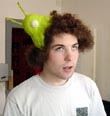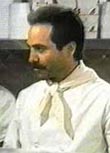|
|
 
|
|
Author
|
Topic: DVD via AES/EBU into CP650
|
|
|
|
|
|
|
Adrian Steiner
Film Handler

Posts: 18
From: Baar, Switzerland
Registered: Dec 2002
|
 posted 05-01-2003 07:12 PM
posted 05-01-2003 07:12 PM




quote:
I think you are confusing non-sync and symmetric. In English symmetric audio connections are called "balanced".
D'oh! The correct expression in English is of course "balanced" and not "symmetric". I shouldn't post at midnight. ![[sleep]](graemlins/sleep.gif) I really ought to be familiar with balanced/unbalanced stuff, as I made an adapter cable so that the Hearing Impaired Output can be connected to the auditoriums old, balanced sound equipment. (And it works.) Shame on me for mixing it up! I really ought to be familiar with balanced/unbalanced stuff, as I made an adapter cable so that the Hearing Impaired Output can be connected to the auditoriums old, balanced sound equipment. (And it works.) Shame on me for mixing it up! ![[Embarrassed]](redface.gif)
Now on topic:
After a first read of the format 80 description all seemed clear: Input is a Dolby Digital signal (L, C, R, Ls, Rs, SW) or a PCM signal on a 110 ohm balanced AES/EBU line. But the note on the input wiring diagramm completely confused me: 2-channel AES/EBU digital output. 2-channel? The format 80 is about 5.1 channels. I think now, they want to point out that the AES/EBU line is balanced (110 ohms) (AKA AES3) and not unbalanced (coaxial 75 ohms cable) (AKA AES3id).
If I got you right Steve, the configuration "DVD players S/PDIF into a S/PDIF to AES/EBU converter and this into the CP650 (with SurroundEX card)" should work.
If anyone has any experience with this, please post if it finally worked or didn't.
It's important to me to know that for sure, as S/PDIF to AES/EBU converters aren't cheap. Although I found simple converting circuits in the web I don't want to use them. They're mostly just impedance matching transformers with some resistors around it. I also won't build the more perfected circuit from an electronics magazine (Elektor). a) A CP650/EX card isn't cheap and b) the AES/EBU line won't be just 2 meters long. More likely 20 times longer. For reliability reasons I'd rather buy a professional one.
Here are some I found by googleing around:
S/PDIF -> AES/EBU:
FP-DFC1 ~480$: http://www.markertek.com/MTStore/product.CFM?BaseItem=FP-DFC1
S/PDIF <-> AES/EBU:
RU-UDC1 ~675$: http://www.markertek.com/MTStore/product.CFM?BaseItem=RU%2DUDC1
CO3 ~250$: http://www.markertek.com/MTStore/product.CFM?BaseItem=MM%2DCO3
Are there major differences in quality between the models (e.g. RU-UDC1 & CO3), or why is there such a big difference in price? Is it just the brand?
Does anyone know of other/more converters?
quote:
Unlike analog cables, digital audio cables carry two channels per cable so a single AES input has two channels on it.
I always assossiate "channels" with things like L, C, R, ... . Here you mean the signal wires in the cable, i.e. a balanced AES/EBU (AES3), don't you? Please write yes; or else my understanding of the whole topic is ![[Confused]](confused.gif) . . ![[Wink]](wink.gif) ![[Roll Eyes]](rolleyes.gif)
Cheers,
Adi
P.S. Sorry for not posting so long. But a few days ago my enormous artwork of technichal poetry got lost as a URL was opend in the browserwindow I was writing the post. I was very depressed - like Marvin (from THHGTTG) ![[Big Grin]](biggrin.gif)
[ 05-02-2003, 12:23 PM: Message edited by: Adrian Steiner ]
| IP: Logged
|
|
Steve Guttag
We forgot the crackers Gromit!!!

Posts: 12814
From: Annapolis, MD
Registered: Dec 1999
|
 posted 05-02-2003 11:34 PM
posted 05-02-2003 11:34 PM




Lets see if I can answer all of this...
Dolby AC-3 rides on one channel of an "AES pair." That is, each AES cable has a pair of channels on it...period...that is its definition.
So, the standard AES input of the CP-650 EX card has one-pair of AES inputs...normally written AES 1/2 (not one-half but one/two). The next pair would be written 3/4...etc up to the number of channels the system can handle).
Invariably, Dolby's AC-3 bit stream rides on channel 1 of the first pair. If your source is so equipped, the CP-650 (when in master digital mode, format 80) will see the AC-3 bit stream and decode it as it was encoded (not necessarily 5.1). In fact, in the pro-world...5.1 would be described as 3/2L....which is read 3-front, 2-rear and Low-Frequency. Why not 5.1? Well the professional side of things will sometimes mix for just stereo for broadcast so a 2/0 mix may be on the AC-3 bitstream, just to site one example.
Now since AES always comes in pairs (as described above), not all digital audio is Dolby AC-3 encoded. One may just mix a regular stereo mix and put left on channel 1 and right on channel 2. Again for broadcast this is a valid way of recording. One could also encode an Lt/Rt mix on the 2-channel digital audio. If you program your CP-650 to decode it, it will. There is an option on the front panel menu (not available on the software and you must be in "install" mode) where you can tell the CP-650 to take any stereo PCM signals and perform a pro-logic decode (strongly recommended for large screens, even if the source was not so encoded).
Now to the S/PDIF...S/PDIF is primarily a consumer format. It is an unbalanced signal that travels on either a 75-Ohm coax cable or via an optical "Toslink" cable. It differs with AES-id in that it runs at a lower voltage and that officially S/PDIF and AES have different flags and headers. So merely going through a transformer to change the impedance from 110-Ohm to 75-Ohm (or vice-versa) does not change the encoding. Having said that...I have yet to find a situation where it didn't work and I haven't encountered any difference between the two. Companies like Radio Design Labs have genuine converters do more than just have transformer type baluns.
What to do for the CP-650...nothing! Dolby already has the transformers on the EX board...you merely have to set the links on the board for the type of input you desire (AES3 or S/PDIF). So it is an either or situation, you can't have both.
As a side note, AES3, AES-id, and S/PDIF all operate at different voltage levels....most inputs have the range to accommodate the extremes though they don't have to.
For a good education on the world of S/PDIF and AES/EBU take a look at:
http://www.rane.com/note149.html
http://www.rane.com/pdf/note149.pdf (in pdf form)
Lastly, yes you can hook your dvd player up to a CP-650 and it will play it just fine in Dolby Digial (AC-3) just like it was encoded.
Steve
| IP: Logged
|
|
|
|
|
|
|
|
|
|
|
|
|
|
|
|
All times are Central (GMT -6:00)
|
|
Powered by Infopop Corporation
UBB.classicTM
6.3.1.2
The Film-Tech Forums are designed for various members related to the cinema industry to express their opinions, viewpoints and testimonials on various products, services and events based upon speculation, personal knowledge and factual information through use, therefore all views represented here allow no liability upon the publishers of this web site and the owners of said views assume no liability for any ill will resulting from these postings. The posts made here are for educational as well as entertainment purposes and as such anyone viewing this portion of the website must accept these views as statements of the author of that opinion
and agrees to release the authors from any and all liability.
|

 Home
Home
 Products
Products
 Store
Store
 Forum
Forum
 Warehouse
Warehouse
 Contact Us
Contact Us




 Printer-friendly view of this topic
Printer-friendly view of this topic








![[sleep]](graemlins/sleep.gif) I really ought to be familiar with balanced/unbalanced stuff, as I made an adapter cable so that the Hearing Impaired Output can be connected to the auditoriums old, balanced sound equipment. (And it works.) Shame on me for mixing it up!
I really ought to be familiar with balanced/unbalanced stuff, as I made an adapter cable so that the Hearing Impaired Output can be connected to the auditoriums old, balanced sound equipment. (And it works.) Shame on me for mixing it up! ![[Embarrassed]](redface.gif)
![[Confused]](confused.gif) .
. ![[Wink]](wink.gif)
![[Roll Eyes]](rolleyes.gif)
![[Big Grin]](biggrin.gif)






